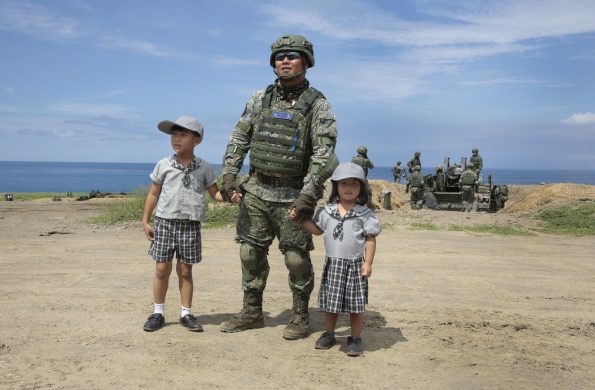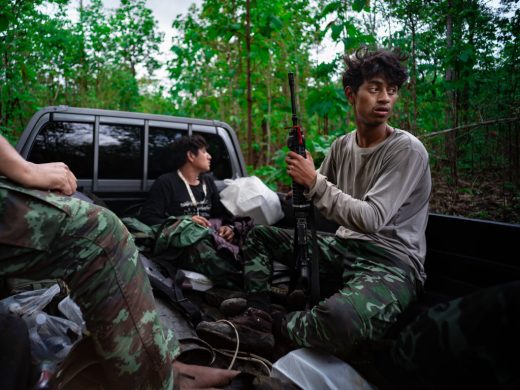NEW YORK, 11 August 2010: United Nations aid agencies and their partners Wednesday requested almost 460 million US dollar (ca. 2,6 milliarder DKR) to help Pakistan assist millions of people affected by floods that have cut a swathe through the country, killing hundreds of people and destroying homes, farmland and major infrastructure.
– We have a huge task in front of us to deliver all that is required as soon as possible, said John Holmes, UN Emergency Relief Coordinator, at the launch of the humanitarian response plan at UN Headquarters in New York.
– The death toll has so far been relatively low compared to other major natural disasters, but the numbers affected are extraordinarily high. If we do not act fast enough, many more people could die of diseases and food shortages, added Mr. Holmes, who is also the Under-Secretary-General for Humanitarian Affairs.
Pakistan estimates that around 14 million people have now been affected by the emergency, with various degrees of severity.
Shelter is an urgent priority and 105 million of the 459,7 million dollar sought is required to provide tents or plastic sheeting, as well as basic household goods, for an initial target of more than 2 million people, according to the UN Office for the Coordination of Humanitarian Affairs (OCHA).
– We are working round the clock to get these items manufactured and delivered. I can confidently say that the response could not be any faster, said Martin Mogwanja, Humanitarian Coordinator for Pakistan.
More than 65.000 tents have already been delivered, covering at least 450.000 people, along with plastic sheets for an estimated 60.000 people.
Up to 6 million people across the country are in need of food aid which is estimated to cost 150 million dollar, while 5,7 million will be needed to ensure the survival of livestock.
The UN World Food Programme (WFP) and its partners have so far delivered more than 4.350 tons of food to at least 370,000 people, including in the remote Swat Valley, which had been cut off from assistance until last week.
Clean water will be provided to approximately 6 million people to prevent the risk of waterborne diseases from emerging. Some 110 million dollar is required to fund efforts to provide water to those affected by the floods.
More than 1 million other persons have already received clean water thanks to the UN Children’s Fund (UNICEF) and its partners.
About 56 million dollar will be required for emergency health care, covering potentially up to 14 million people, while 14 million dollar is needed to ensure proper nutrition for children under the age of five, and for pregnant or lactating women.
Different types of medication have already been delivered for the prevention and treatment of several diseases.
– The response of the international community has so far been encouraging. It is essential that this continues, Mr. Holmes said, adding that “the magnitude of the disaster is sinking into the international community.”
So far, donors have committed or contributed 47 million dollar to the response activities of the UN and its partners, and a further 99,5 million has been pledged (lovet). At least 300 million is, however, still urgently needed.
The funds requested under the initial floods emergency response plan will be revised within 30 days to reflect assessed needs as the situation evolves.
Over the course of July and early August, monsoon rainfall caused the worst floods in living memory in Pakistan. Flash floods and river valley floods have devastated large parts of the country causing an estimated 1.200 deaths. At least 288.000 homes have been damaged or destroyed.
In Khyber Pakhtunkhwa (KPK) province, the worst affected region, intense rains during the last week of July and in early August were compounded by the swelling of major rivers due to rainwater surging down from highland areas.
The Pakistan Meteorological Department reported that within one week in late July, KPK received 9.000 millimetres of rainfall – 10 times as much as the province normally receives in the course of an entire year.
Balochistan, Pakistan-administered Kashmir and Gilgit Baltistan, also experienced extreme weather, resulting in widespread loss and damage.
By early August, flood waters breached the river bank in at least eight districts of Punjab, inundating homes and destroying crops and livestock. At least eight million people in Punjab have been affected by the disaster. Flooding has spread to the southern province of Sindh.
In light of the devastation caused by the floods and the ongoing threat to lives and livelihoods, the Government, through its National Disaster Management Authority, requested UN agencies and the wider humanitarian community prepare an initial floods emergency response plan.
Considering the scale of the area hit by the floods, the number of people in need of assistance is expected to rise as assessments continue and access improves. The combined population of the affected districts is around 43 million, out of Pakistan’s total estimated population of 168 million.
Response efforts have been hampered by limited access to areas with destroyed infrastructure. – Access difficulties have been mainly physical. We are trying to use any possible means of delivery, from helicopters to donkeys, Mr. Holmes noted after the launch of the plan.
Insecurity in some of the affected areas – especially parts of KPK – remains unpredictable.
UN agencies, non-governmental organizations (NGOs) and the International Organization for Migration (IOM) are planning to assist vulnerable flood-affected people in up to seven different geographical areas – Balochistan, Punjab, the Federally Administered Tribal Area, Gilgit Baltistan, KPK, Pakistan-administered Kashmir and Sindh.
Kilde: FNs Nyhedstjeneste














